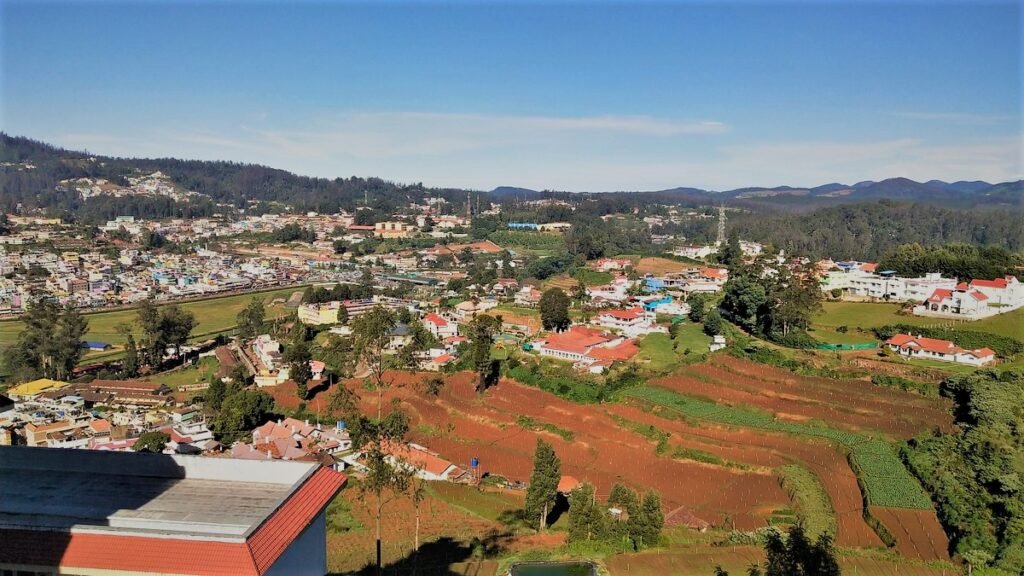Nestled amidst the scenic Nilgiri Hills of southern India, Ooty, formally known as Udhagamandalam, is a picturesque hill station that captivates travelers with its breathtaking landscapes, pleasant climate, and rich cultural heritage. A haven for nature enthusiasts and adventure seekers, this charming destination has earned the moniker “Queen of Hill Stations” and remains one of India’s most popular tourist spots. In this blog, we’ll delve into various aspects of Ooty, exploring its history, geography, attractions, culture, and more. If you are planning a trip to Ooty, check here for travel insurance and here for flights.
Table of Contents
Historical Background
Ooty’s historical background is fascinating, with its transformation from a tribal land to a flourishing hill station during the British colonial era. Let’s delve deeper into the historical journey of Ooty:
1. Tribal Inhabitation: Before the British arrived, the Nilgiri region, including the area where Ooty is situated, was inhabited by several indigenous tribal communities. The Todas, Badagas, and Kotas were among the prominent tribes residing in the region. They had their unique customs, traditions, and agricultural practices, living in harmony with the natural surroundings.
2. British Discovery: The discovery of Ooty by the British is credited to John Sullivan, who was the Collector of Coimbatore during the early 19th century. In the early 1800s, Sullivan came to the Nilgiri Hills in search of a suitable place to escape the scorching heat of the plains during summers. He was captivated by the region’s pleasant climate, lush landscapes, and enchanting beauty. Recognizing its potential as a hill station, he decided to develop the area into a retreat for the British officials and soldiers.

3. Early Development: Once the decision to establish a hill station was made, the British began the process of transforming the tribal land into a colonial settlement. They laid the foundation of the hill station by constructing roads, buildings, and other essential infrastructure. The cooler climate and fertile land were conducive to agriculture, and the British started cultivating crops such as tea, coffee, and fruits.
4. Naming of Udhagamandalam: The original name of the hill station, “Udhagamandalam,” is derived from the Toda word “Othakal-mund,” which means “house in mountains.” Over time, the name was Anglicized to “Ootacamund” and later shortened to “Ooty,” which is the popular name by which it is known today.
5. British Influence and Summer Retreat: Ooty quickly became the favored summer retreat for British officials and officers, who sought respite from the oppressive heat of the lowlands. They constructed colonial-style bungalows, churches, clubs, and other buildings that still grace the landscape of Ooty today. Some of these heritage structures have been preserved and are open to tourists, offering a glimpse into the colonial past.
6. Nilgiri Mountain Railway: The British also constructed the Nilgiri Mountain Railway to connect Ooty with the plains. This historic railway, with its charming toy trains and scenic route, was built in the early 20th century and eventually earned the status of a UNESCO World Heritage Site.
7. Post-Independence Era: After India gained independence in 1947, Ooty continued to be a popular hill station destination for tourists from all over the country and beyond. The natural beauty and pleasant climate of the region attracted people seeking relaxation and rejuvenation.
8. Modern Development and Tourism: Over the years, Ooty has undergone modern development to accommodate the growing number of tourists. Hotels, resorts, restaurants, and recreational facilities have sprung up to cater to the needs of visitors while striving to maintain the town’s natural charm.
Today, Ooty remains one of the most sought-after hill stations in India, attracting tourists throughout the year. Its historical significance, combined with its breathtaking landscapes and pleasant weather, continues to make it a beloved destination for travelers seeking solace in the lap of nature.

Geography and Climate
Geography of Ooty:
Ooty is located in the Western Ghats mountain range of southern India, in the state of Tamil Nadu. It is part of the Nilgiri Biosphere Reserve, which is one of the 18 UNESCO-designated biosphere reserves in India. The town is situated at an altitude of approximately 2,240 meters (7,350 feet) above sea level, making it one of the highest altitude hill stations in India.
The landscape of Ooty is characterized by undulating hills, verdant valleys, dense forests, and numerous water bodies. The Nilgiri Hills, which surround Ooty, are part of the larger Western Ghats, known for their exceptional biodiversity and unique ecosystems. The region’s geographical features contribute to its cool and pleasant climate, making it a popular escape from the heat of the plains, particularly during the scorching summer months.

Climate of Ooty:
Ooty experiences a subtropical highland climate, with relatively mild temperatures throughout the year. The town’s high elevation influences its weather patterns, resulting in cooler temperatures compared to the surrounding lowlands. The climate can be best described as mild summers, chilly winters, and moderate rainfall during the monsoon season.
- Summer (March to May): Ooty’s summer season is quite pleasant, with temperatures ranging from 15°C to 25°C (59°F to 77°F). It provides a refreshing escape for people seeking respite from the hot weather in other parts of India. Summer is the peak tourist season, and many visitors flock to Ooty during this time.
- Monsoon (June to September): Ooty experiences moderate to heavy rainfall during the monsoon season. The showers enhance the region’s natural beauty, filling the lakes, rivers, and waterfalls. While the landscape turns lush and green, trekking and outdoor activities may be limited due to the rains.
- Autumn (October to November): After the monsoon, Ooty experiences a brief period of autumn when the weather stabilizes, and the town regains its charm. The temperatures remain pleasant, and the surroundings offer a picturesque setting.
- Winter (December to February): Ooty’s winter season is cold but not harsh, with temperatures ranging from 0°C to 15°C (32°F to 59°F). It is the best time for honeymooners and those who enjoy the cold weather. The mornings and evenings can be particularly chilly, and visitors are advised to carry warm clothing.

Overall, the climate in Ooty is ideal for growing a variety of fruits and vegetables, including tea and coffee. The region’s tea plantations are a testament to its favorable weather conditions for agriculture.
Due to its alluring climate and breathtaking landscapes, Ooty remains a year-round destination for tourists. Each season brings its own charm, making Ooty a delightful place to visit whenever you decide to experience its beauty and tranquility.
Botanical Gardens
The Government Botanical Garden in Ooty is one of the town’s most iconic and must-visit attractions. Established in 1848, the garden is a botanical marvel that spans a vast area of 55 acres. It is located on the lower slopes of the Doddabetta Peak, providing a stunning backdrop of the Nilgiri Hills.
History and Development: The idea of creating a botanical garden in Ooty was conceptualized during the British colonial era. The garden was originally laid out by the Marquis of Tweeddale, the then Governor of Madras, and it was later developed and maintained by the British horticulturist William Graham McIvor. Over the years, the garden has undergone several improvements and additions, making it the vibrant and diverse attraction it is today.
Flora and Fauna: The Government Botanical Garden is home to an extensive collection of flora from around the world, making it a botanical treasure trove. Visitors can explore a wide variety of plant species, both indigenous to the Nilgiri region and exotic imports from different continents. The garden is divided into several sections, each showcasing specific plant groups. Some of the noteworthy sections include:
- Fossil Tree Trunk: The garden boasts a fossilized tree trunk that dates back over 20 million years. This ancient relic is a fascinating attraction for visitors interested in geology.
- Tropical Trees and Plants: This section houses a diverse range of tropical trees, some of which are towering specimens that provide ample shade and create a soothing ambiance.
- Fern House: As the name suggests, this area is dedicated to various species of ferns. The lush greenery and delicate fronds make it a tranquil spot to explore.
- Italian Garden: This well-maintained garden area features a symmetrical layout with well-manicured lawns, colorful flowerbeds, and ornamental structures, offering a taste of European garden design.
- Conservatory and Nurseries: The conservatory houses a variety of rare and delicate plants, including beautiful orchids and other exotic blooms. The garden’s nurseries play a crucial role in propagating and preserving endangered plant species.
Annual Flower Show: One of the highlights of the Government Botanical Garden is the annual flower show held in May. During this time, the garden bursts into a riot of colors as it showcases an incredible array of flowers and plants. Horticulturists and flower enthusiasts from various regions participate in the event, displaying their best floral creations. The flower show attracts a large number of tourists and locals alike, making it a vibrant and festive affair.

Educational and Recreational Value: Apart from being a major tourist attraction, the Government Botanical Garden serves as an educational resource for students, researchers, and nature lovers. The garden’s layout and informative signboards provide valuable insights into various plant species and their ecological significance. It is a wonderful place for botany enthusiasts to learn about different plant families and their characteristics.
The Government Botanical Garden in Ooty offers a delightful experience for visitors of all ages. It is a serene haven for nature lovers, a paradise for plant enthusiasts, and a place of respite and relaxation for travelers exploring the beauty of Ooty. A visit to this enchanting garden is a must to immerse yourself in the natural wonders of the Nilgiri Hills.
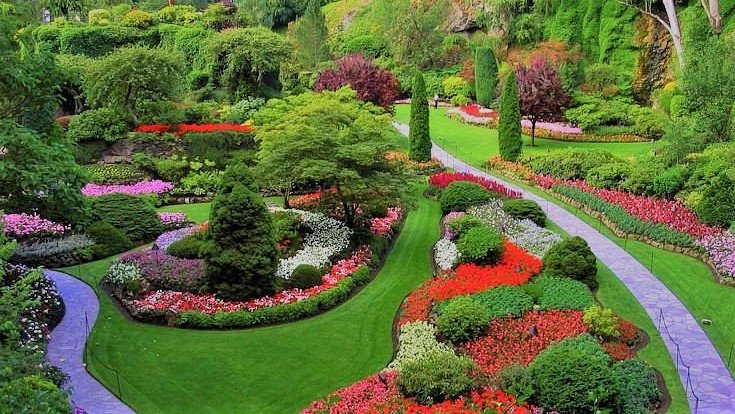
Ooty Lake
Ooty Lake is a scenic artificial lake located in the heart of Ooty, just a short distance away from the town’s center. It is one of the most popular and picturesque tourist spots in the hill station, attracting thousands of visitors each year. Created in the early 19th century by the British, Ooty Lake has become an integral part of the town’s identity and a symbol of its natural beauty.
History and Creation: The idea of constructing a lake in Ooty was first proposed by John Sullivan, the British Collector of Coimbatore and the founder of the hill station. The primary purpose of building the lake was to provide an additional water source for the town and its surrounding areas. It was also intended to serve as a recreational spot for boating and leisure activities.
Geography and Features: Ooty Lake spreads over an area of approximately 65 acres and is surrounded by eucalyptus trees and lush greenery, adding to its captivating beauty. The lake is relatively shallow, with an average depth of about 40 feet. Its irregular “L” shape further enhances its uniqueness.

Boating Experience: Boating on Ooty Lake is one of the main attractions for visitors. The lake offers various boating options, including paddleboats and rowboats. Tourists can rent these boats and enjoy a leisurely ride on the serene waters while soaking in the breathtaking views of the surrounding hills. The experience is especially delightful during the pleasant weather of Ooty’s summer and autumn months.
The Joy of Lakeside Strolls: The lake’s perimeter is a favorite spot for lakeside strolls and leisurely walks. Visitors can take a relaxing walk along the well-maintained pathways that encircle the lake, providing ample opportunities to capture picturesque views through photographs or simply to enjoy the tranquil atmosphere.
Deer Park and Children’s Play Area: Adjacent to the Ooty Lake is the Deer Park, which houses various deer species, making it a delightful spot for wildlife enthusiasts. Additionally, there is a children’s play area near the lake, making it a family-friendly destination where children can enjoy swings and slides.
Nature at its Best: Ooty Lake’s serene ambiance and lush surroundings make it a natural habitat for a variety of birds and aquatic life. Birdwatchers can spot several species of birds, including ducks, swans, and other waterfowl, making it a birdwatcher’s paradise.
Sunset Views: Visiting Ooty Lake during sunset is a magical experience. As the sun dips below the horizon, the sky transforms into a canvas of vibrant colors, reflecting on the tranquil waters of the lake. It is a sight that lingers in the memory of visitors.
Conservation and Environmental Awareness: Ooty Lake faces environmental challenges due to increased tourism and pollution. To protect its ecological balance and maintain its pristine beauty, various conservation efforts have been initiated. Visitors are encouraged to follow responsible tourism practices, such as not littering and avoiding the use of plastic near the lake.
Ooty Lake is a captivating destination that epitomizes the serene beauty of Ooty. With its boating experience, picturesque surroundings, and abundant natural charm, it remains an essential part of any traveler’s itinerary. The lake’s allure lies not only in its breathtaking vistas but also in the sense of peace and tranquility it offers to all who visit.

Doddabetta Peak
Doddabetta Peak is the highest point in the Nilgiri Hills and a prominent tourist attraction in Ooty. Standing tall at an elevation of approximately 2,637 meters (8,650 feet) above sea level, the peak offers breathtaking panoramic views of the surrounding landscapes. A visit to Doddabetta is a must for nature enthusiasts, adventure seekers, and anyone who wishes to witness the majestic beauty of the Nilgiri region from its highest vantage point.
Geography and Location: Doddabetta Peak is situated about 10 kilometers (6.2 miles) from the main town of Ooty. It lies on the Ooty-Kotagiri Road (NH 181) and is easily accessible by road. The peak is part of the Nilgiri Biosphere Reserve, which is known for its unique biodiversity and lush greenery.
Viewpoint and Telescope House: At the summit of Doddabetta Peak, there is a viewpoint area and a Telescope House. Visitors can climb up to the observation platform to witness the breathtaking views of the Nilgiri Hills, the vast stretches of tea estates, dense forests, and the town of Ooty below. On clear days, the sight extends as far as the plains of Coimbatore and the Mysore plateau. The Telescope House provides telescopes through which visitors can get a closer look at specific points of interest in the distant landscapes.
Adventure and Nature Trails: For adventure seekers and nature lovers, Doddabetta Peak offers various trekking opportunities. Several trails lead to the summit, each offering a unique experience of the region’s natural beauty and diverse flora and fauna. The trek to Doddabetta is relatively moderate and can be undertaken by trekkers of various fitness levels.

Botanical Diversity: The area around Doddabetta Peak is rich in botanical diversity. The slopes of the peak are adorned with a variety of plants and trees, some of which are unique to the Nilgiri region. Nature enthusiasts can spot various species of rhododendrons, magnolias, and other flowering plants, making the trek to the summit even more rewarding.
Weather at Doddabetta: Due to its high elevation, Doddabetta Peak experiences cooler temperatures compared to the lower regions of Ooty. The weather at the summit can be quite unpredictable, with sudden changes in temperature and misty conditions. It is advisable for visitors to carry warm clothing, especially during early mornings and evenings.
Responsible Tourism: As a popular tourist spot, Doddabetta Peak witnesses a significant footfall throughout the year. To preserve its natural beauty and ecological balance, responsible tourism practices are essential. Visitors are urged not to litter and to respect the local flora and fauna while exploring the region.
Photography and Souvenirs: Doddabetta Peak offers ample opportunities for photography enthusiasts to capture stunning vistas and create lasting memories. There are also small shops and vendors near the viewpoint selling local handicrafts, souvenirs, and refreshments for visitors to take back cherished mementos of their trip.
Doddabetta Peak is more than just a vantage point; it is an experience that allows travelers to connect with nature’s grandeur and experience the awe-inspiring beauty of the Nilgiri Hills. Whether you’re an adventure enthusiast, a nature lover, or simply seeking tranquility amidst scenic surroundings, a visit to Doddabetta Peak will undoubtedly leave you captivated by the magnificence of Ooty’s highest peak.

Tribal Culture
Ooty and its surrounding regions are home to several indigenous tribal communities, each with its own unique culture, customs, and way of life. These tribes have inhabited the Nilgiri Hills for centuries, living in harmony with nature and preserving their rich cultural heritage. The major tribal communities in the Ooty region include the Todas, Badagas, and Kotas. Let’s delve deeper into the tribal culture of Ooty:
1. Todas: The Todas are one of the most well-known tribal communities in the Nilgiri region. They are primarily concentrated in the areas around Ooty and its neighboring villages. Traditionally, the Todas were pastoralists, rearing buffaloes and conducting dairy-based livelihoods. Today, some Toda families still maintain their traditional lifestyle, while others have embraced modern professions.
Unique Dwellings: Todas are famous for their distinctive houses called “munds” or “dogles.” These houses are barrel-shaped, with a small entrance and no windows. The munds are made of bamboo and grass, reflecting the tribe’s unique architectural style.

Cultural Practices: The Todas have their unique cultural practices and customs, including specific rituals related to birth, marriage, and death. Their traditional dresses are eye-catching, with women wearing black shawls with red and white embroidery and men donning knee-length cloths.
2. Badagas: The Badagas are the largest tribal community in the Nilgiri Hills and have a significant presence around Ooty. Historically, the Badagas were agriculturists, cultivating crops like millet and vegetables on the hillsides. Over time, some Badaga families have ventured into other professions, while others continue to engage in traditional farming practices.
Community-based Living: The Badagas live in close-knit communities, and each village is typically headed by a “Hatti” (chief). Their villages often have a centralized temple and a meeting place known as the “Gotthu,” where community discussions and events take place.
Festivals and Traditions: The Badagas celebrate various festivals with great enthusiasm. “Hethe Habba,” an important festival, is dedicated to the worship of their ancestors and is marked by various rituals and feasts.
3. Kotas: The Kotas are one of the smaller tribal groups in the Nilgiri region and are primarily found in the area around Kotagiri, which is close to Ooty. Historically, the Kotas were hunter-gatherers and also practiced shifting cultivation. Today, their traditional way of life is gradually giving way to modern livelihoods.
Unique Crafts: The Kotas are skilled in crafting items from bamboo and rattan, and their baskets and handicrafts are known for their intricate designs and durability.
Spiritual Beliefs: The Kotas have their spiritual beliefs and rituals, often involving worship of deities associated with nature. They have a deep connection with their surroundings and have traditionally revered the natural elements.
Preservation of Tribal Culture: The Tamil Nadu government, along with various non-governmental organizations (NGOs), has undertaken initiatives to preserve and promote the unique tribal culture of the region. Efforts are made to provide educational and healthcare facilities to tribal communities while respecting their traditional way of life and cultural practices.
Visiting Tribal Areas: Some tribal villages in the Nilgiri region welcome tourists who are interested in learning about their culture and lifestyle. However, it is essential to approach these visits with respect, sensitivity, and a responsible attitude to avoid intruding on the privacy of the tribes or disrupting their daily lives.
The tribal culture of Ooty adds to the region’s rich cultural tapestry, providing a glimpse into the traditions, customs, and close bond these indigenous communities share with nature. As visitors to Ooty, it is vital to appreciate and respect the heritage of these tribes while cherishing the harmony they have maintained with their environment for generations.
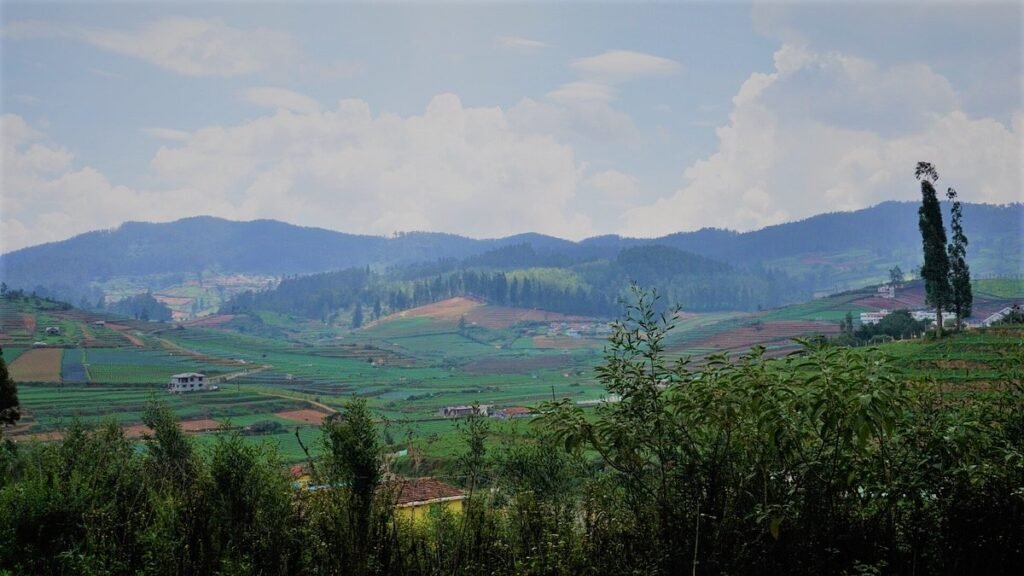
Tea Plantations
Ooty, situated in the Nilgiri Hills, is renowned for its lush tea plantations, which produce some of India’s finest tea. The cool climate and fertile soil of the region create the perfect conditions for cultivating high-quality tea leaves. Visiting the tea plantations in Ooty offers a fascinating opportunity to learn about the tea-making process, witness stunning landscapes, and, of course, indulge in freshly brewed tea. Let’s explore more about the tea plantations in Ooty:
1. History of Tea Cultivation: The British were instrumental in introducing tea cultivation to the Nilgiri region during the 19th century. They recognized the potential of the area’s climate and soil for tea production and established the first tea estates. Over time, tea cultivation flourished, and today, Ooty is home to several tea estates producing a significant portion of India’s tea.
2. Varieties of Tea: The tea estates in Ooty primarily produce three varieties of tea: black tea, green tea, and white tea.
- Black Tea: This is the most common type of tea produced in Ooty. The tea leaves undergo a process of withering, rolling, fermentation, and drying, resulting in the characteristic dark color and strong flavor.
- Green Tea: Green tea is made by steaming or pan-frying the freshly plucked tea leaves to prevent fermentation. This process helps retain the green color and natural antioxidants in the tea, making it a healthier option.
- White Tea: White tea is the least processed among the three varieties. It involves minimal processing, and only the young tea buds and leaves are used, resulting in a delicate and subtle flavor.

3. Tea Plantation Tours: Many tea estates in Ooty offer guided tours for visitors to experience the tea-making process firsthand. These tours typically take visitors through the tea gardens, showing them the different stages of tea production, from plucking the tea leaves to processing and packaging. Knowledgeable guides explain the nuances of tea cultivation and answer any questions that visitors may have.
4. Tea Tasting Sessions: Tea tasting sessions are an integral part of the tea plantation tours. After witnessing the tea-making process, visitors get the chance to sample a variety of teas produced on the estate. Tea tasting sessions allow guests to appreciate the distinct flavors and aromas of different tea types, enhancing their understanding of the nuances of tea.

5. Scenic Landscapes: Apart from the tea-making experience, the tea plantations in Ooty offer breathtaking views of rolling hills blanketed with tea bushes. The orderly rows of tea plants on the slopes create mesmerizing patterns against the backdrop of the Nilgiri Hills, making it a photographer’s paradise.
6. Buying Tea Souvenirs: Visitors can purchase freshly packed tea directly from the tea estate shops as souvenirs. These teas make for great gifts to take back home, ensuring you can savor the flavors of Ooty long after your visit.
Tea plantations in Ooty not only contribute to India’s rich tea heritage but also offer a delightful and educational experience for visitors. The tea estates’ lush greenery, tea-making process, and tea tasting sessions create a memorable and immersive journey into the world of tea production. So, don’t miss the chance to explore these scenic tea plantations and savor the Nilgiri’s finest brew during your visit to Ooty.
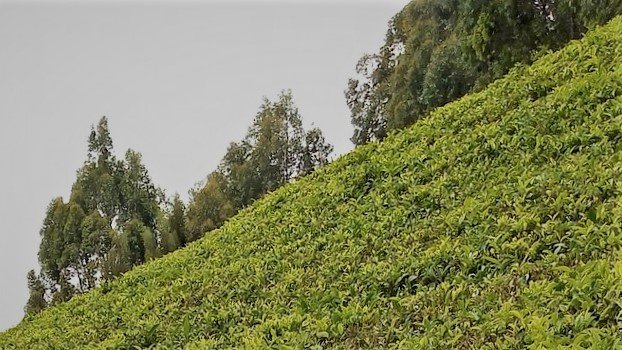
Nilgiri Mountain Railway (Toy Train)
The Nilgiri Mountain Railway (NMR), affectionately known as the “Toy Train,” is a unique and historic narrow-gauge railway in India. It connects the town of Mettupalayam, located in the plains of Tamil Nadu, to the picturesque hill station of Ooty in the Nilgiri Hills. The toy train ride is an enchanting experience that takes passengers on a scenic journey through lush green landscapes, winding tracks, and charming hillside villages. Let’s explore more about the Nilgiri Mountain Railway:
1. Historical Background: The construction of the Nilgiri Mountain Railway began in 1891 and was completed in 1908. The British colonial authorities initiated the project to provide an efficient transportation link between the plains and the Nilgiri Hills. The railway was designed by Swiss engineer Arthur Riggenbach and later implemented by Indian engineer H.S. Hutton. Due to the steep gradient and challenging terrain, the railway was built as a rack and pinion system, allowing the train to climb steep slopes comfortably.
2. UNESCO World Heritage Status: In July 2005, the Nilgiri Mountain Railway was designated as a UNESCO World Heritage Site. It was recognized for its unique engineering and historical significance, as well as its cultural and natural value. The toy train’s inclusion in the prestigious list has further increased its popularity among tourists.
3. Train Journey: The journey on the Nilgiri Mountain Railway is a delightful one, covering a distance of approximately 46 kilometers (28 miles) and taking about five hours to reach Ooty from Mettupalayam. The train passes through 208 curves, 16 tunnels, and more than 250 bridges, providing passengers with captivating views of the Nilgiri Hills and the surrounding landscape.
4. Charming Stations: The Nilgiri Mountain Railway passes through several charming stations on its way to Ooty, each with its unique character and appeal. Some of the notable stations include Kallar, Adderley, Hillgrove, Coonoor, Wellington, and Lovedale. The stop at Coonoor allows passengers to disembark and explore the picturesque hill station before continuing the journey to Ooty.
5. The Famous Coonoor Loop: One of the highlights of the toy train journey is the “Coonoor Loop.” This is a fascinating engineering feat where the train makes a complete loop around itself to gain altitude gradually. Passengers on board can witness the front and rear of the train simultaneously during this loop, offering a fun and memorable experience.
6. Steam and Diesel Locomotives: Originally, the Nilgiri Mountain Railway operated entirely on steam locomotives. However, in recent years, to meet the demands of increasing tourist traffic, diesel locomotives have been introduced on certain routes. The sight and sound of the steam engines chugging through the hills add to the nostalgia and charm of the journey.

7. Popular Tourist Attraction: The toy train ride on the Nilgiri Mountain Railway is a popular tourist attraction, drawing visitors from all over India and abroad. It is advisable to book train tickets well in advance, especially during peak tourist seasons, to secure a seat on this delightful journey.
The Nilgiri Mountain Railway, with its vintage charm, remarkable engineering, and breathtaking landscapes, is not just a mode of transportation; it’s an experience that transports passengers back in time to an era of slower-paced, scenic train journeys. Riding the toy train from Mettupalayam to Ooty is a must-do activity for travelers seeking a unique and unforgettable adventure in the picturesque Nilgiri Hills.

Local Cuisine
Ooty, being a popular hill station in southern India, offers a delightful array of local cuisine that reflects the rich flavors of the region. The town’s culinary scene incorporates a blend of traditional South Indian dishes, colonial influences, and locally sourced ingredients. From street food to fine dining, Ooty’s local cuisine promises a memorable gastronomic journey. Let’s explore some of the must-try dishes and culinary experiences in Ooty:
1. Ooty Varkey: Ooty Varkey is a popular tea-time snack unique to the region. It is a flaky and crunchy biscuit-like savory treat made from all-purpose flour, ghee (clarified butter), and a dash of pepper and cumin for flavor. Ooty Varkey is a favorite among locals and visitors alike and is often enjoyed with a cup of hot tea or coffee.
2. Ooty Chocolates: Ooty is renowned for its delectable homemade chocolates. With several chocolate shops and factories spread across the town, you’ll find a wide range of chocolates in different flavors, shapes, and sizes. Whether it’s milk chocolates, dark chocolates, or assorted varieties, these chocolates make for perfect souvenirs to take back home.

3. Mushroom Dishes: Ooty’s cool climate and lush forests make it an ideal location for growing mushrooms. As a result, various mushroom-based dishes are popular in local cuisine. Mushroom fry, mushroom masala, and mushroom biryani are some of the must-try delicacies for vegetarians and non-vegetarians alike.
4. Biryani: Ooty boasts its own version of biryani, a fragrant and flavorful rice dish cooked with aromatic spices and tender meat (usually chicken or mutton). The biryani here has a unique blend of spices that sets it apart from the biryanis found in other regions of India.
5. Ooty Parotta: Parotta is a popular Indian flatbread, and the Ooty version is unique with its soft and flaky texture. It is typically served with kurma (a spiced curry) or a variety of vegetarian and non-vegetarian side dishes, making it a satisfying and filling meal.
6. Ooty Bajji and Pakoda: During monsoon and cooler weather, the streets of Ooty come alive with the aroma of bajjis (fritters) and pakodas (deep-fried snacks). Locals and tourists alike enjoy these hot and crispy snacks made from a variety of vegetables such as potato, onion, chili, and plantain.
7. Ooty Mutton Chops: Ooty is famous for its mutton chops, a savory dish made from succulent mutton pieces marinated with a mix of spices and shallow-fried to perfection. This mouthwatering delight is a must-try for meat lovers.
8. Ooty Halwa: Ooty Halwa is a sweet delicacy that you shouldn’t miss. Made from wheat, sugar, ghee, and flavored with cardamom, this soft and chewy halwa is a favorite among locals and tourists alike.
9. Local Markets and Food Stalls: To experience the authentic flavors of Ooty’s local cuisine, head to the local markets and food stalls. The markets offer an abundance of fresh fruits, vegetables, and spices, while the food stalls serve an assortment of street food, allowing you to savor the region’s culinary delights like a true local.
The local cuisine of Ooty is a delightful blend of traditional and contemporary flavors that cater to diverse palates. From savory snacks to delectable sweets, Ooty’s gastronomy is sure to leave you craving for more. Exploring the local cuisine is an essential part of your visit to Ooty, offering a tantalizing experience that complements the town’s natural beauty and cultural heritage.

Adventure Activities
Ooty, nestled in the Nilgiri Hills, not only captivates visitors with its scenic beauty but also offers a range of exciting adventure activities for adrenaline seekers. Whether you’re a nature lover, trekking enthusiast, or someone who loves outdoor challenges, Ooty has something to offer to satisfy your thirst for adventure. Let’s explore some of the thrilling activities you can enjoy in Ooty:
1. Trekking: The Nilgiri Hills provide a picturesque setting for trekking, with several trekking trails catering to different difficulty levels. Popular trekking routes include the Doddabetta Peak Trek, the Kotagiri Trek, and the Lamb’s Rock Trek. Trekking through the misty hills and dense forests offers an opportunity to connect with nature and witness breathtaking landscapes.
2. Mountain Biking: Ooty’s hilly terrain makes it an ideal destination for mountain biking enthusiasts. You can rent mountain bikes and explore the rugged trails that wind through tea estates, forests, and quaint villages. Mountain biking allows you to experience the region’s beauty at a thrilling pace.

3. Boating in Pykara Lake: Pykara Lake, located about 20 kilometers from Ooty, offers boating activities in serene surroundings. You can enjoy pedal boating or motor boating on the lake, surrounded by lush greenery and the tranquility of nature.
4. Jeep Safari in Mudumalai National Park: If you’re a wildlife enthusiast, consider taking a thrilling jeep safari in the nearby Mudumalai National Park. The park is known for its diverse wildlife, including elephants, tigers, leopards, and various bird species. A safari through the dense forest is an exhilarating experience.
5. Camping and Bonfires: Camping in the serene environs of Ooty is a memorable experience. There are camping sites available in various locations, allowing you to spend a night under the stars. Many campsites organize bonfires, adding to the rustic charm of the camping experience.

6. Zip Lining and Rope Activities: Some adventure parks in Ooty offer zip-lining and rope activities, allowing you to glide through the air or challenge yourself on high ropes courses. These activities are suitable for both children and adults, providing an exciting day of fun and adventure.
7. Paragliding: If you have a penchant for flying, paragliding is an adventure activity you can enjoy in Ooty. Flying over the picturesque landscapes and experiencing the thrill of soaring in the air is an unforgettable experience.
8. Rock Climbing and Rappelling: For those seeking vertical thrills, rock climbing and rappelling activities are available in certain locations around Ooty. Qualified instructors guide participants through the techniques, making it a safe yet exhilarating adventure.
9. Fishing in Ooty’s Lakes: Ooty’s lakes, such as Avalanche Lake and Emerald Lake, offer opportunities for fishing. Enjoy the peaceful surroundings while trying your hand at catching some freshwater fish.
Safety Considerations: Before engaging in any adventure activity, ensure that you opt for reputable operators with experienced guides and adhere to safety guidelines. Some activities may require prior booking, especially during peak tourist seasons.
Ooty’s adventure activities combine the thrill of exploration with the enchanting beauty of the Nilgiri Hills, creating an unforgettable experience for adventure seekers. Whether you’re trekking through the hills, cruising on a boat, or soaring through the air, these activities add a touch of excitement to your visit to this charming hill station.
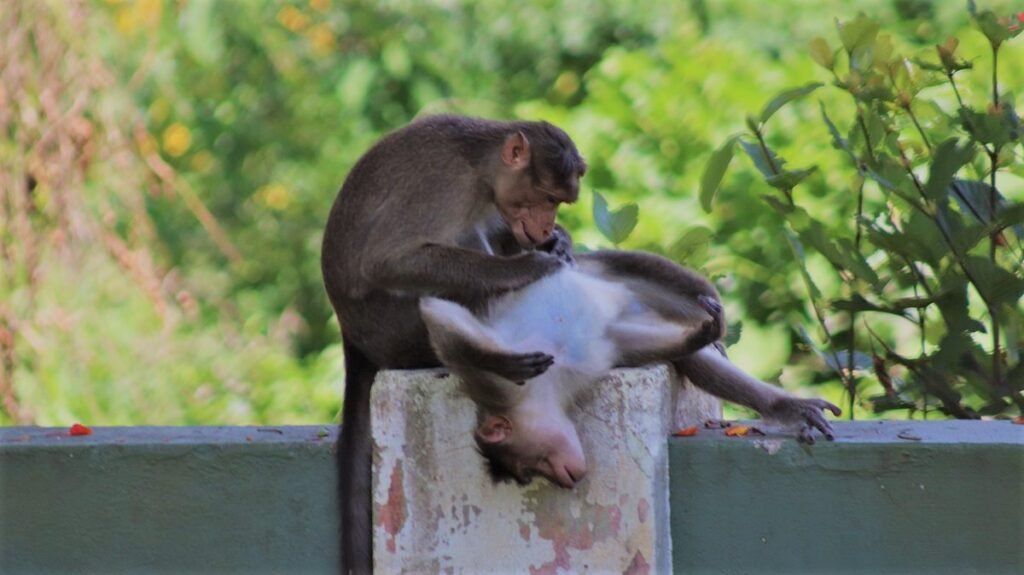
Ooty’s allure lies in its seamless blend of nature’s beauty, colonial charm, and cultural vibrancy. From lush landscapes to colonial-era architecture, from tranquil gardens to tribal heritage, Ooty offers a diverse array of experiences. Whether you seek relaxation or adventure, Ooty will undoubtedly leave you enchanted with memories that last a lifetime. Plan your visit to this magical hill station and immerse yourself in the mesmerizing beauty of Ooty, the Queen of Hill Stations in India.

Check out the other blogs here.
